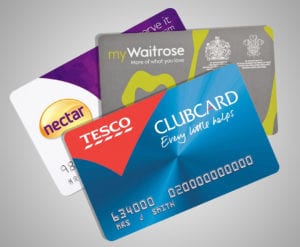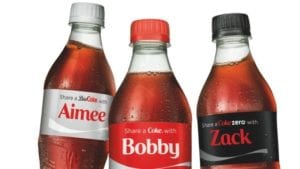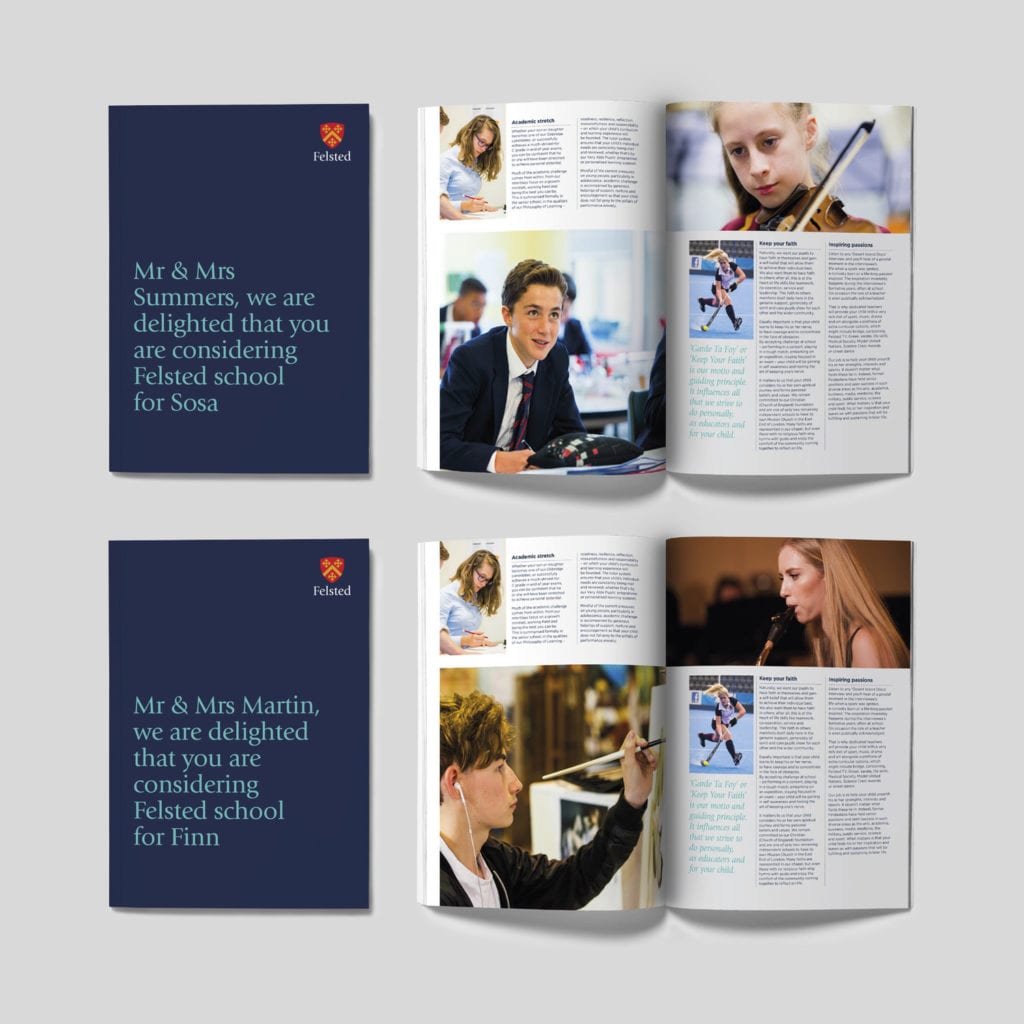Here’s a tricky question to start with: What exactly is a brand?
If you were to ask 10 different people, you would probably get 10 different answers. At restless, we define a brand as an individual, emotional, experience with a product, service or organisation over time.
So, a brand is not just a logo, font or a colour palette, it’s a total experience. But the key word here is ‘individual’. A consumer’s interaction with a brand is just that, individual.
It may be good, or bad, based on that person’s ‘own’ personal experiences, and will differ to the next person’s, with their own set of experiences.
Successful brands strive to deliver experiences that are, by-and-large, similar. They develop strategies and processes to deliver consistency of product or service, wherever it’s being experienced, off and online or face-to-face. But some brands are going even further, offering a truly personal brand experience. As a business strategy, personalisation can really make a huge difference to that ‘individual’ experience.
What is personalised marketing?
In its simplest form, personalised marketing takes place when companies deliver individualised messages and product offerings to current or prospective customers.
An example of this could be when we are greeted by someone using our name when arriving at a restaurant, or when we are sent a marketing communication that addresses us personally, perhaps using our first name too.
Over the years, we have seen more and more sophisticated examples of this kind of personalisation, celebrating birthdays or anniversaries, often made possible by advances in digital technology. These days, my own pets even get their own personal mail!
But what’s in a name?
Research from The University of Texas has highlighted that consumers perceive greater media enjoyment when exposed to a customised online environment than not, along with a greater behavioural intention for interaction. This, they say, is down to first, a desire for control and second, information overload. But why?
Our desire for control
At it simplest, a personalised experience is different to the norm: something you are viewing is tailored to you and therefore makes you ‘feel’ more in control.
If you think a little harder about it, you realise that, actually, it’s an illusion. Deep down you know that you aren’t actually making a choice when you see personalised content on your Amazon page, but you know that you are being given something that is tailored to you and so you perceive that you are having some control over what you are engaging with.
Avoiding information overload
In today’s society where we are bombarded with adverts and content, it stands to reason that a personalised experience is preferred because it helps reduce the perception of information overload. We all seem to be more time poor these days. With so many distractions in the modern world vying for our attention, we often look for the short cut, skip the adverts or flick through the brochure to get to the part we’re really interested in.
Tailored content allows the consumer to have a more manageable amount to deal with, and that feels – easier.
When is personalisation useful?
Personalisation is truly useful when it:
- Tailors information to our individual needs
- Is actually relevant
- Has value based on previous choices
Getting personalisation right
 Brands have been using data to provide us with this kind of personalised experience for years. The loyalty card industry and brands like Sainsbury’s with its Nectar Card or Tesco with its Clubcard, have been collecting data on us for decades. Apparel brands, Mi Adidas and NIKEiD both entice their customers to do the same with their footware purchases, selecting design elements and colours according to their individual preferences.
Brands have been using data to provide us with this kind of personalised experience for years. The loyalty card industry and brands like Sainsbury’s with its Nectar Card or Tesco with its Clubcard, have been collecting data on us for decades. Apparel brands, Mi Adidas and NIKEiD both entice their customers to do the same with their footware purchases, selecting design elements and colours according to their individual preferences.
 Some brands really do get it right, like Amazon, which tailors the entire customer experience seamlessly, using sophisticated, smart algorithms to recommend products based on wish lists, past purchases and abandoned carts. They even have a name for it: item-to-item collaborative filtering. This algorithm has allowed Amazon to target sales so effectively and using this methodology, Amazon has generated 102.1 billion in net revenue; 35% of Amazon.com’s revenue is generated by the recommendation engine. So, it kinda works!
Some brands really do get it right, like Amazon, which tailors the entire customer experience seamlessly, using sophisticated, smart algorithms to recommend products based on wish lists, past purchases and abandoned carts. They even have a name for it: item-to-item collaborative filtering. This algorithm has allowed Amazon to target sales so effectively and using this methodology, Amazon has generated 102.1 billion in net revenue; 35% of Amazon.com’s revenue is generated by the recommendation engine. So, it kinda works!
Creating better business and customer experiences
Research from US customer data company ‘Segment’ found that:
- 44% of consumers say that they will likely become repeat buyers after a personalised shopping experience with a particular company
- 49% say they have purchased a product that they did not initially intend to buy after receiving a personalised recommendation from a brand
- 40% of consumers say they have purchased something more expensive than they originally planned because their experience was personalised
Arguably even more interesting, in a recent Deloitte study, it was found that people don’t just want personalised communication, but products and services that are also tailored to them:
- 36% of consumers expressed an interest in purchasing personalised products or services
- 48% said they’d be willing to wait longer in order to receive it
Personalisation can work for all brands, whatever size
“OK, that’s all well and good,” I hear you say, and “for the big brands, with big budgets, they can do ‘personal’ really well,” but how can every organisation benefit from personalisation?”
Well from our experience, it’s about being as relevant as you can be to your market that’s the key factor when it comes to personalisation, as exemplified in our case study of Felsted School.
Getting personal at Felsted School
In a recent prospectus project for our client, Felsted, an independent school in Essex, we used our bespoke online marketing solution called Unify.
Unify allowed us to deliver a personalised prospectus software solution that married seamlessly with the school’s brand purpose, all the while improving marketing productivity (saving time) and lowering print costs.
Our solution enabled the school to not only add a personal greeting on the cover of each prospectus it produced, but also to precisely tailor content by selecting only information that was relevant to a particular student, based on age and interests.
This brought the school closer to its core audience while also allowing them to reach prospective parents and students in a more personalised way.

Each prospectus is created as a pdf that can be sent via email, or digitally printed and delivered direct to parents within 48 hrs. It’s actually the tactile nature of the personalised printed brochure that’s really made a big impression, not only on parents, but with the students themselves. They ‘feel’ valued. By adding personalisation to their prospectus brochure, we have streamlined their whole admission process, saving them both time and money. The parent feedback has been very encouraging, and the school is now looking into ways to add personalisation to other areas of communications throughout the school.
“We would very much like to thank Felsted for the recent admissions pack. It was wonderful, and the personalisation was a fantastic attention to detail which made it extra special.” – Felsted Parent
So what does the future hold?
Technology will undoubtedly continue to lead the way in how we communicate. The Internet of Everything (IOT) is slowly beginning to make a difference for brands too. Light fixtures in offices and shops can now be used to send messages to my smart phone to alert me of important information or sales promotions as I walk past a certain product, (it’s the stuff of sci-fi movies). Amazon’s Alexa already knows my favourite artists and song (although has yet to learn that I’ve never liked Elton John and my view on this is unlikely to change anytime soon)!
We will undoubtedly be marketed to in a more personal way. Artificial intelligence too has already begun to make our brand interactions more personal. Online chat bots can now mimic humans and can engage in real-time conversations, answering complex questions. It’s perhaps a bit scary, but does it matter if we don’t realise? I wonder whether AI bots will ever be programmed to have ‘an off day’, once in a while, to truly reflect a ‘real’ human experience.
So, what can you do NOW, with your brand?
When it comes to adding personalisation to your customer experience, our advice at Restless is that first and foremost, you need to really know your customers.
Only then can you focus on what is important: ensuring your communications and any aspects that you personalise are relevant to them and provide a clear value. It is then that you will see an increase in uptake from your customer base.
How to define real value
The following five categories (as devised by Andrew Saville, Head of Sales Retail at Experian Marketing Services), will help you put value into context for your brand. Use them to analyse your marketing communications currently to assess whether or not you are delivering value to your customers.
- Reward me – not necessarily a monetary reward but should be something of definite value
- Remind me – a timely, useful and helpful reminder about something relevant to the customer
- Recognise me – giving someone recognition for a specific action or series of actions
- Support me – providing valuable customer service and support to help solve an issue or a question
- Choose for me – an accurate and reliable recommendation which the customer is definitely aligned to
Below are a few pointers to consider when adding personalisation
What personalisation are you offering right now?
- Take an audit of your brand – how personal and relevant is your customers’ experience?
- Do you tailor your marketing at all?
- If yes, is it by ‘name’ only or do you tailor content too?
Understand your customers – what do they expect?
- Is personalisation suitable to your brand or industry?
- Collect data by conducting a customer survey
- Ask questions like ‘By adding personalisation (or doing more), how can we improve your customer experience?’
Target personalisation where it will be most effective for your brand
- Are you adding value with your personalisation?
Make sure your data is accurate and reliable
- Reviewing your data customer is essential to make sure is kept up-to-date
Brands should always be looking to innovate and the develop their products and services to encourage growth and help them stay ahead of the competition. Considering the points above could help you assess how well you are or could be personalising your brand and responding to the changing needs of your customers.
A new year is a great time to reflect on and review your brand as a whole, so why not make a review of personalisation integral to that?
If you’d like to get more personal…
We’d love to have a chat with you about adding personalisation to your marketing communications.
If you’d like us to think about your brand, contact us at [email protected] or call 01279 797 250 and ask for Lawrence or Steve.
